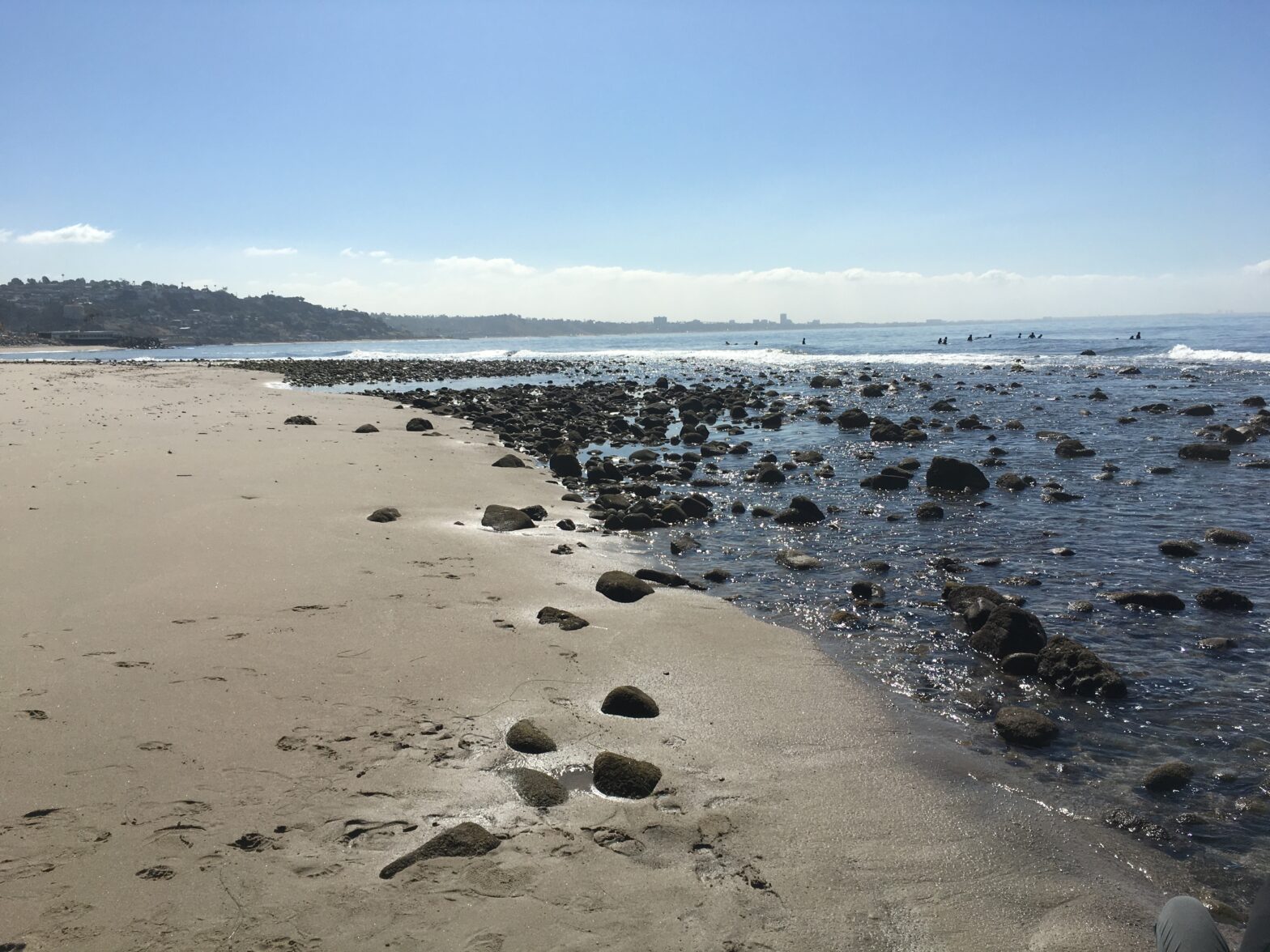Rocky intertidal habitats are found at the interface between ocean and land. In Santa Monica Bay these habitats are primarily found along Palos Verdes Peninsula and in Malibu, with mostly sandy beaches along the coast in between.
The rocky intertidal habitat in the south end of Santa Monica Bay, off Palos Verdes tends to be composed of bedrock that is not strongly influenced by sand, although landslides have added sediment with local impacts, with warmer water. By contrast, in the north end of Santa Monica Bay off the Malibu coastline, water temperatures are usually cooler, and the rocky intertidal is composed mostly of cobble/boulder outcrops surrounded by and influenced by sand.
Physical conditions in rocky intertidal habitats are highly variable. Primary environmental factors that drive differences in species composition and biodiversity at the site level are the substrate, whether bedrock, cobble/boulder, or mixed sand-rock, and the wave regime, whether exposed or protected. Other factors include sand exposure, slope, 3-dimensional complexity, water temperature, air temperature during low-tide exposure, and adjacent coastal habitat. Salinity, and levels of dissolved oxygen and carbon dioxide may change during low tides.
Some of these factors, such as temperature and wave or sand exposure, vary seasonally as well as geographically. Site-to-site differences in these physical features result in expected differences in community composition. For example, a site with more wave exposure has different species and abundance patterns than a site that is more sheltered. Thus, comparing data across multiple sites requires similar physical characteristics to accurately assess trends.
